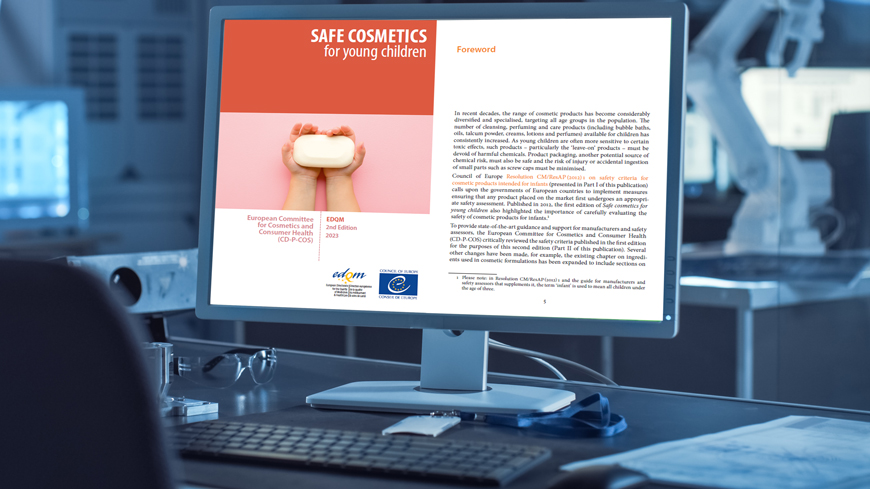Soda or shampoo? Candy or soap? Young children can easily mistake certain cosmetics or even their packaging for foodstuff based on their perfume, appearance, form, colour or size. Ingesting the chemicals contained in such products is dangerous and small parts can easily be swallowed and may cause choking.
Young children are sensitive to the toxic effects of certain chemicals, which can put their health at risk. While the EU’s rapid alert system (Safety Gate, formerly known as RAPEX) flags unsafe products once they are on the market, the rate at which new cleansing, perfuming and care products for children come to market has put considerable stress on market surveillance authorities in recent decades.
The European Committee for Cosmetics and Consumer Health (CD-P-COS, co-ordinated by the European Directorate for the Quality of Medicines & HealthCare [EDQM]/Council of Europe) seeks to identify, address and avoid such health risks by providing appropriate guidance for manufacturers and safety assessors. The publication of the second edition of Safe cosmetics for young children, based on the Council of Europe Resolution CM/ResAP(2012)1 on safety criteria for cosmetic products intended for infants, is a key measure in its efforts to reduce health risks arising from children’s exposure to a variety of cosmetic products from an early age.
To provide stakeholders with the most recent, science-based guidelines, the CD-P-COS (comprising national experts from competent authorities) conducted a critical review of existing practice and standards, bringing the safety criteria for cosmetic formulations of the second edition in line with the state of the art. The revised edition includes:
- new sections on nanomaterials and endocrine disruptors;
- updated calculation of the safety margin for cosmetic ingredients;
- revised safety evaluation criteria for finished products;
- recommendations for specific product use (e.g. fluoride, baby wipes);
- updated study and regulatory references.
Download and further information
The second edition of Safe cosmetics for young children is available in English and French.
The PDF versions can be downloaded for free online.
The paper editions are available for purchase from the EDQM WebStore.
See also:




